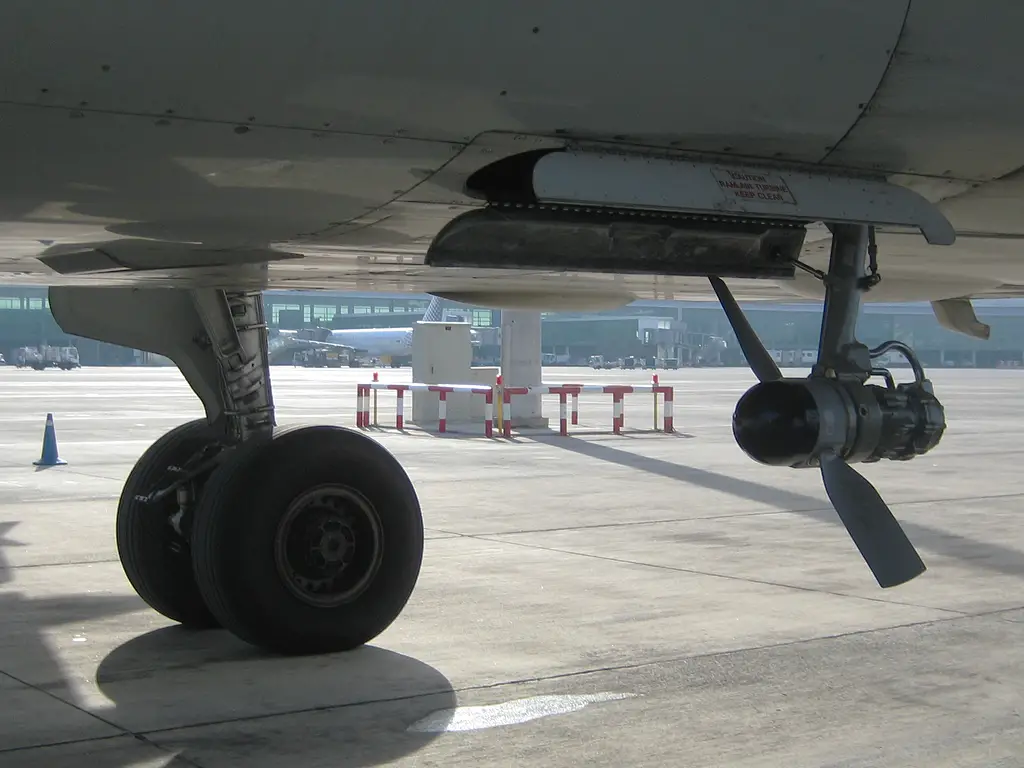In the realm of aviation, safety is paramount. One of the lesser-known yet crucial components of an aircraft’s safety system is the Ram Air Turbine (RAT). This article aims to shed light on the significance of the RAT and its role in ensuring the safety of aircraft and passengers.
A Ram Air Turbine is a small turbine that is deployed from the fuselage or wing of an aircraft during an emergency situation. It is designed to provide electrical power and hydraulic pressure to the aircraft’s control systems in the event of a failure of the main power sources, such as the engines or the auxiliary power unit (APU). The RAT is a last resort system, and its deployment is typically accompanied by the loss of one or both engines.
Join us on TELEGRAM for the Latest Aviation Updates fresh to your phone.
The RAT operates on a simple principle: as the aircraft moves through the air, the forward motion forces air into the turbine, causing it to spin. The spinning turbine then drives a generator, which produces electrical power. This power is used to operate the aircraft’s critical systems, such as flight controls, communications, and navigation equipment. In some aircraft, the RAT also powers a hydraulic pump, which maintains the hydraulic pressure required for the operation of the aircraft’s control surfaces.

One of the key features of the RAT is its ability to deploy automatically when it senses a drop in the aircraft’s electrical and hydraulic systems. This ensures that the aircraft’s critical systems remain operational even in the event of a catastrophic failure of the main power sources.
The RAT is a vital component of an aircraft’s safety system, and its design and operation are subject to stringent regulations and testing. The Federal Aviation Administration (FAA) and other regulatory bodies require that the RAT be capable of providing sufficient power and hydraulic pressure to maintain control of the aircraft and ensure a safe landing.
In conclusion, the Ram Air Turbine is an unsung hero of aviation safety. Its role in providing emergency power and hydraulic pressure to an aircraft’s critical systems can be the difference between a safe landing and a catastrophic outcome. As such, it is a crucial component of an aircraft’s safety system and a testament to the aviation industry’s commitment to ensuring the safety of passengers and crew.
Featured image by: Curimedia | Commons Wikimedia
Youssef Yahya is the CEO and Founder of Aviation for Aviators. He also serves as the Chief-in-Editor of the platform’s website, where he shares his passion for aviation and provides valuable resources for aviation enthusiasts and professionals alike. His love for aviation and entrepreneurial spirit drive him to create innovative solutions, making Aviation for Aviators a unique resource in the aviation sector.
You might also like:
- Could ‘Break Up’: Boeing Whistleblower Alleges Structural Flaws in 787 Dreamliner
- British Airways Returns to Thailand After Four-Year Break
- Embraer and Lanzhou Aviation Industry Development Group Ink LOA for 20 P2F Conversions at Paris Air Show 2023
- How Many Flights Can a Pilot Fly in a Day?
- Boeing and FFA Reveled a new fresh problem with the 787 Dreamliner
Discover more from Aviation for Aviators
Subscribe to get the latest posts sent to your email.


